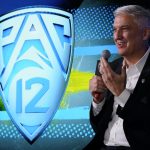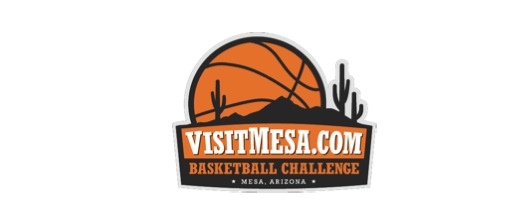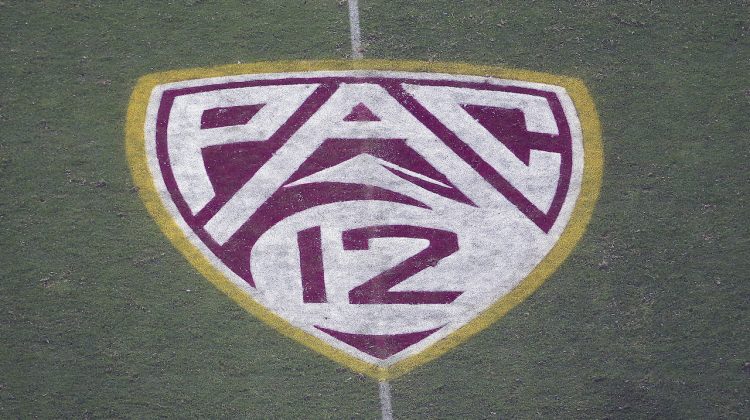The Hotline mailbag is published each Friday. Send questions to pac12hotline@bayareanewsgroup.com or hit me on Twitter: @WilnerHotline. Due to volume — and in some cases, the need for research — not all questions will be answered the week of submission. Thanks for your understanding.
Some questions have been edited for clarity and brevity.
Can you briefly explain why it is that Stanford and Cal are slated every year to play USC and UCLA while Oregon, for example, isn’t? Especially since the two Los Angeles schools are historically better than the remainder of the South. — Donald N.
This dates to the horse-trading that occurred in 2010, when Colorado and Utah joined the conference, divisions were formed and the Pac-12 implemented an equal-share policy with its revenue distribution.
What do we mean? Here’s a brief history of the money matter:
During the 10-team era, annual payouts from the conference office were based on network TV appearances. The L.A. schools, because of their massive market and competitive success, generally received above-average network exposures. As a result, they collected larger-than-average paychecks from HQ.
One of the major changes to accompany expansion was a move to equal share, by which all 12 schools received the same distribution regardless of TV exposures. The Bruins and Trojans weren’t thrilled, obviously (and still aren’t).
At the same time, the California schools wanted to continue playing each other every year. Fans and school administrators alike in Southern California enjoyed the ‘Weekenders’ in San Francisco; the reverse was true for Bay Area fans and school officials heading to L.A. for 48 hours.
Naturally, the Pacific Northwest schools resisted. Frequent matchups with USC and UCLA are important for recruiting exposure (road games) and ticket sales (home games). If the L.A. teams were locked into two games each year against Cal and Stanford — plus their five divisional commitments — there would be fewer slots available to play the Northwest schools.
But because USC and UCLA agreed to equal-share on the revenue, and because the California schools pushed hard for the continuation of their annual series, the schedule rotation was set in the manner we see today.
That said, it might not continue.
Whether it happens in time for 2022 or not until 2023-24, we expect the Pac-12 to eliminate divisions and drop to eight conference games.
— Eliminating divisions would enhance playoff access: If the championship game matches No. 1 vs No. 2, an upset likely would produce a team qualified for the playoff. In a North vs. South format, an upset could result in a three- or four-loss champion that doesn’t deserve a playoff berth.
— Dropping to eight conference games would create an opening for each team to face Big Ten (and eventually ACC) opponents in alliance matchups.
With those changes, the annual California cross-stitch series might be eliminated.
You simply couldn’t lock the quartet into three dates with each other within an eight-game schedule — it would reduce, to an unacceptable degree, the frequency that non-California teams were able to play USC and UCLA.
The natural rivalries would be preserved, of course. No matter how an eight-game conference schedule were configured, the Apple Cup, Big Game, Crosstown Showdown, Territorial Cup, etc., would remain in place.
But maybe the Bay Area teams would play the L.A. teams two out of every four years, or three out of every five.
To be clear: This is our strong suspicion. Nothing about alliance matchups, intra-conference schedule or division format has been finalized, but it’s headed that way.
Where does the Pac-12 office ultimately end up when the albatross lease is (finally) up? — @AlmostFamous412
The conference is under contract in downtown San Francisco for another 18-24 months, and commissioner George Kliavkoff has made it clear the lease will not be renewed.
(That doesn’t mean HQ is necessarily leaving the Bay Area, although we suspect it will land somewhere else.)
The future home of the conference office is part of a broader calculation for Kliavkoff that involves both the Pac-12 Networks — will they exist? and if so, in what form? — and potential partnerships with media companies.
Also, to what extent is the Pac-12 willing to plant its headquarters in a state (Nevada) without a member university?
Like so much else, the answer will come sometime in the next two years.
Why are the only two choices for CFP expansion now (with locked-in ESPN exclusivity) and three years from now with open negotiations? Why wouldn’t ESPN agree to a temporary deal for three years while allowing an open negotiating timeline as stated in the first contract. — @keithdennis
College Football Playoff officials are, in fact, hoping for exactly that — for ESPN to allow other media companies share in the broadcast of an expanded event in the 2023-25 seasons.
The solution could be as simple as Fox airing the opening round and quarterfinals, with ESPN showing the semifinals and championships.
Or it could mean ESPN and Fox splitting the eight additional games. Or maybe it’s CBS. Or Turner.
We have no idea, and the specifics don’t matter at this point. The key is ESPN’s willingness to share the broadcast rights prior to the expiration on the contract in 2026.
If Oregon finishes the season 13-0 and goes to the playoff beating a UCLA team in the championship game that has four losses, for example, could the Rose Bowl select a 10-2 Oregon State team as the Pac-12 representative? — @KentBrockman1A
Good question, and one that could surface frequently as the season unfolds.
Technically, the Rose Bowl would be free to choose its Pac-12 participant if Oregon jumped into the playoff. Here’s the wording in the CFP policy:
“When not hosting semifinals, the Orange, Rose and Sugar bowls (the “contract bowls”) will make their own pairings outside the CFP arrangement. Generally, they will take the champion of their contracted conference; if that champion qualifies for the playoff, the bowl will then choose a replacement from that conference.”
Our understanding is the Rose Bowl would take the next-highest-ranked team to replace Oregon. And if the Beavers are 10-2 and the Bruins are 9-4, it stands to reason OSU would be ranked higher.
It certainly would behoove the bowl to select the Beavers in that situation, particularly in regard to ticket sales and audience interest. A four-loss UCLA team coming off a loss in the title game, unranked and playing in its home stadium would not make for compelling viewing.
And in that scenario, Oregon State would have a better record in league play. The conference office would assuredly lean on the Rose Bowl to select the Beavers.
Why did UCLA and Villanova agree to an 8:30 p.m. start time at Pauley Pavilion? — @bruinalytics
Our assumption is that ESPN pushed for the late start. Exactly why that might have been the case, we cannot say. (It’s an ESPN2 broadcast, by the way.)
And don’t forget: It’s a Friday game. The late start reduces traffic concerns for fans without demanding too much of them with work/school the next day.
Any updates from commissioner George Kliavkoff on the alliance? — @Pyperkub
No updates. It will take time for details to emerge because of all the moving parts.
Each of the three conferences (Pac-12, Big Ten and ACC) has assigned athletic directors to work through the contractual, logistical and competitive obstacles. My understanding is they generally meet (virtually) on Sundays.
In addition to creating the schedule openings and the format for inter-conference games, Kliavkoff and his peers in the Big Ten (Kevin Warren) and ACC (Jim Phillips) must come to an agreement with TV partners.
If alliance games are scheduled for 2022-23, then ESPN and Fox have the broadcast rights to any matchups on Pac-12 campuses.
Is Jake Haener’s play raising additional questions about Jimmy Lake and the Washington offense/culture? — @TrefzgerSpencer
Given all the problems with UW’s offense, it would be easy to blame Lake and playcaller John Donovan for losing Haener to the transfer portal. But he left the program in Aug. ’19, prior to the start of Chris Petersen’s final season in charge.
And remember: That was the Jacob Eason season in Seattle. I don’t remember anyone questioning the decision to name Eason the starter.
Give Haener all the credit for developing into one of the top quarterbacks in the western half of the country. But we disagree with the notion that his emergence at Fresno State reflects poorly on Lake and Donovan.
They had nothing to do with the decision that led to his departure.
Chip Kelly’s buyout goes to $0 after Jan 15, 2022. What are the odds that he’s UCLA’s coach to start the 2022 season? — @Turrible_towel
Pretty damn good if the Bruins keep winning. And with each passing week, there’s a marked reduction in the potential for a collapse significant enough to cost Kelly his job.
Put another way …
If we presume that a winning season would qualify as enough progress to ensure Kelly’s return in 2022, then UCLA is just four victories from that point with eight games to play.
The upcoming schedule is anything but soft. However, it’s difficult to image the Bruins backsliding to the point that the school feels compelled to make a change.
If you were USC’s athletic director, who would you hire? — @solarschmidt
The Hotline is planning a deep-dive column on the Trojans’ hiring process and all the dynamics involved, so I’ll avoid too much detail here.
However, I wouldn’t consider anyone from the Air Raid tree.
If the playbook doesn’t allow for 30 carries per game by LenDale White 2.0, it doesn’t work for USC.
Support the Hotline: Receive three months of unlimited access for just 99 cents. Yep, that’s 99 cents for 90 days, with the option to cancel anytime. Details are here, and thanks for your support.
*** Send suggestions, comments and tips (confidentiality guaranteed) to pac12hotline@bayareanewsgroup.com or call 408-920-5716
*** Follow me on Twitter: @WilnerHotline
*** Pac-12 Hotline is not endorsed or sponsored by the Pac-12 Conference, and the views expressed herein do not necessarily reflect the views of the Conference.
Related posts:
 Wilner Hotline: Optics and Arizona State, Showdown with Utes
Wilner Hotline: Optics and Arizona State, Showdown with Utes
 Wilner Hotline: Upcoming Pac-12 Head Football Coaching Vacancies
Wilner Hotline: Upcoming Pac-12 Head Football Coaching Vacancies

(AP Photo/Marcio Jose Sanchez)
Commissioner George Kliavkoff on the state of Pac-12 football (‘We’re in the valley’) Wilner – Pac-12 football: USC, Colorado lead our final transfer portal power ratings of 2023
Wilner – Pac-12 football: USC, Colorado lead our final transfer portal power ratings of 2023


